
A balanced exercise program including resistance exercise has been proven to delay the onset of serious chronic diseases like heart disease, stroke, dementia, hypertension and insulin resistance (Type 2 diabetes). If you are over 35, this article is for you, and your future self. It’s easier to prevent the onset of disease then it is to treat it. When combined with resistance exercise, balance exercises help you prevent falls, which are a common cause of frailty, loss of independence and serious injuries such as hip, wrist and shoulder fractures.
Everyone knows that exercise is important. Very few people, however, seem to understand all of the benefits that exercise provides. Many of the folks I meet in my office know the recommended exercise guidelines. 30 minutes of aerobic exercise per day. They assume their heart will be the organ system that will benefit the most. Most people do not understand the difference between aerobic exercise, resistance exercise, and balance exercise. Walking is a great activity, but it is not an example of resistance exercise. Many people will prefer a straightforward resistance exercise program over an aerobic program. In an ideal world, you perform aerobic, resistance and balance exercises. After a brief description, there will be a few videos to help get you started on a program you can do on your own without a gym or trainer.
Resistance exercise has been proven to be as effective as aerobic exercise in delaying the onset of chronic disease such as dementia, heart disease, insulin resistance, type 2 diabetes.
Stay tuned and read on… there are some great videos near the end to help you get started.
Sarcopenia is a scary word
Sarcopenia is the process of age-related muscle loss. Starting around 50 you lose about 1% of your muscle mass per year. By the time you are in your 70s and 80s the loss of muscle mass is profound. This loss of muscle mass puts you at risk for frailty. Frailty is very strongly associated with a rapid decline in health. When you lose your muscle mass you lose your ability to prevent a fall, and dramatically increase the recovery from a fall. Individuals who are already weak or frail are at risk of losing their independence if an unexpected illness or injury arises. Even a short 3-5 day period of bedrest might make it so that a frail person cannot recover. Luckily, sarcopenia can be stopped in its tracks with an appropriate resistance exercise program and some nutritional support.
Aging and why exercise is so important
Age is the number one risk factor for chronic diseases such as diabetes, dementia, atherosclerosis, stroke and so on. Aging is incurable. Evidence provided over the years shows that we can delay the onset of chronic disease for 10-20 years with lifestyle changes such as diet and exercise. Exercise provides multiple benefits. Over the course of this post, we will explore many of the benefits of a resistance and balance exercise program. But first, an important take-home message.
Weakness, muscle mass loss and balance issues start far younger than you think. Now is the time to start a program to prevent it. Chronic disease can lead to weakness and frailty. Hospitalizations can worsen that frailty in a matter of days to weeks. Unfortunately for many, the final common pathway to our demise is often a fall. No, it’s not the fall that kills you, it’s the after-effects of the fall that lead to our demise. Stay with me for a second. Many people in their 60s and beyond are suffering from chronic diseases. Diabetes, heart disease and dementia exact a large toll on our lives. I see many patients who have metabolic syndrome- a collection of findings indicative of poor health. These diseases start to impair our health. High LDL, hypertension, insulin resistance (pre-diabetes), fatty liver or NAFLD if present together are referred to as the metabolic syndrome. This heralds the onset of a number of issues that have a metabolic etiology or cause. Initiating and maintaining a good exercise program (see the videos below) can help delay the onset of these diseases. They are especially effective when combined with an emphasis on proper nutrition.
Chronic disease, over time, will initiate the onset of dementia, and frailty. A fall may put you or a loved one in a hospital for a few days. When you leave the hospital you notice that you are even weaker. Typically no formal intervention such as physical therapy is initiated, no formal resistance exercise program is initiated. You move less, the weakness worsens, the frailty worsens. You have trouble walking over a certain distance, you have trouble getting out of a chair. The spiral down has started. We can break this cycle. It is never too late, or too early to start a resistance or balance exercise program.
The next fall might cause a broken hip. The hip surgery and convalescence will exact an even larger toll on your body. Now you will require a nursing home because you can no longer walk unassisted. Your fall risk is now sky high, and because you are not moving around you are prone to develop infections, pneumonia, worsening cardiac status, worsening insulin resistance. You see where this is going. The fall that occurred months ago won’t be the cause of death… but it will be the underlying reason for everything that followed in an eerily predictable manner. Let’s change this scenario. Why is resistance exercise so important? To prevent frailty, weakness, and the risk of suffering from chronic disease at a young age.
Again, it is never too late, nor too early to start a resistance exercise program. You got this.
Follow along, and check out the exercise and balance videos below.
Four Pillars of an Exercise Program
Below are the four pillars of a complete exercise program. When considering what types of exercise to perform, it is useful to know what forms of exercise are available and the benefits that each provides.
- Aerobic (AET)
- Resistance, eg weights or body weight exercises (RET).
- Balance training – have you noticed that you trip and stumble more often?
- HIT: High-intensity training.
Types of Exercise and Their Intended Benefits
Aerobic exercise can be brisk walking, swimming, cycling, elliptical, rowing machine, running or hiking. This form of exercise does not strengthen muscles nearly as much as resistance exercise.
Benefits of aerobic exercise: Aerobic exercise is critical to decrease stress, lower your blood pressure, improve your insulin resistance, decrease your risk of cardiac disease, stroke, and type 2 diabetes(insulin resistance).
Resistance exercise involves lifting weights, yoga, and body weight exercises such as squats.
Benefits of resistance exercise: Resistance exercise helps you build and maintain muscle mass. This is absolutely critical when it comes to healthy aging and decreasing the risk of frailty. Sarcopenia (age-related muscle loss) will decrease your muscle mass over time. By the time that you are in your 70’s the decrease in muscle mass can be dramatic. That put’s you at risk for falling. It increases the risk of injury following a fall. Loss of muscle mass will also delay your recovery after a fall. Poor muscle mass and strength will worsen after a fall, starting a vicious cycle downward.
Resistance exercises do not require a gym. Most of you can be performing bodyweight exercise on your stairs, by getting up and down from a chair, performing a calf raise, etc. Many people find squatting to be very challenging. I have seen 80-year-old patients squat. You can do this at any age. This is a very good video to show you how to work up to performing a good squat.
Mobility exercises are a set of movements that work to improve your balance and your agility, but also work to strengthen many parts of your body. You’re never too old to do this, assuming your doctors say it is OK to exercise. These are not as easy as they look, but for some of you, just getting down into this position and standing back up will be enough of a short workout if performed repetitively. I present, Bear Crawls.
Balance training:
Starting to perform balance exercises in our late 30’s and early 40’s is critical. Falls are a very common cause of injury as we age. Our ability to balance diminishes by our late 40’s.
Benefits of a balance exercise program: Our balancing abilities start to diminish in our 40’s. You catch your foot on the carpet, you stumble more often. Most don’t even notice these subtle changes. It is critical to incorporate a balance exercise program as part of an overall healthy aging strategy.
Those scales in the previous video are great at improving your balance, and decreasing your risk of falling. At the same time, they help improve your hip and core strength.
Here are some more advanced balance exercises for those of you looking for something more challenging. Our balancing abilities start to falter in our 40’s and 50’s. It is never too early to start balance and mobility training.
A proper exercise program will be one of the most important things you do to decrease the risk of chronic disease. A proper exercise program consists of aerobic exercise, resistance exercise, and balance exercises. Exercise will improve your odds of recovering from an illness or surgery. In your later years, and exercise program started now may just save your life. Exercise helps us optimize for longevity and an improved healthspan.
An emerging body of literature is starting to reveal that exercise should be used as a primary treatment to mitigate or lower the risk of developing many chronic diseases.
Resistance exercise has been shown to influence:
- Heart disease
- Type 2 diabetes
- Cancer
- muscle loss
- fall risk
When do you plan on starting your exercise program?
And of course… it goes without saying. Those of you with heart or other serious medical conditions should check with your doctor first. Some of these balance exercises are challenging. if your balance is poor have someone monitor or assist you.


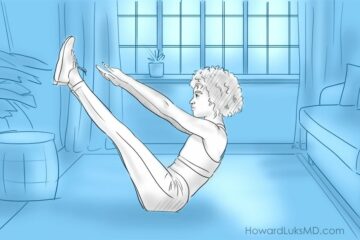
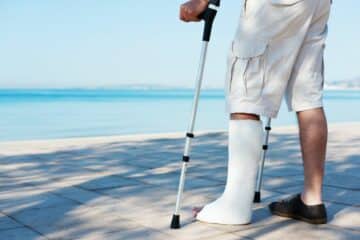
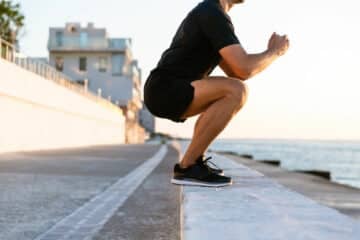
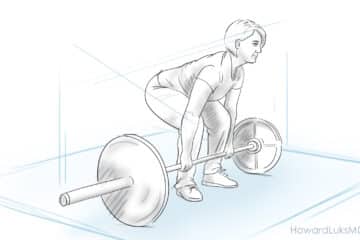




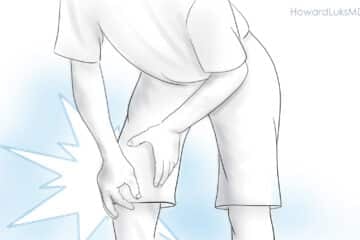


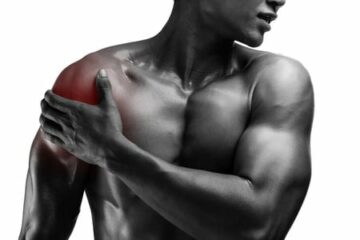
Hey Howard, i’m a french physio and i want to ask you something.
I have a family member with cardio-muscular dystrophy who is 60 years old.
I read your article high intensity exercise and I wanted to know if it was compatible with his heart condition.
Her cardiologist told her to limit herself to brisk walking.
Because I saw in your article that research has been done on the use of this exercise in people with heart disease.
Can you tell me more about it?
Thanks a lot, Fabien
HI Fabien … I do not know which exercise would be appropriate for your family member. An exercise prescription needs to be correlated to a patient’s specific needs based on their ECHO, stress test, and status of their cardiac muscle. Seek out a few opinions by cardiologists in your region if need be. Find one willing to have this conversation with you and your family member. Good luck !